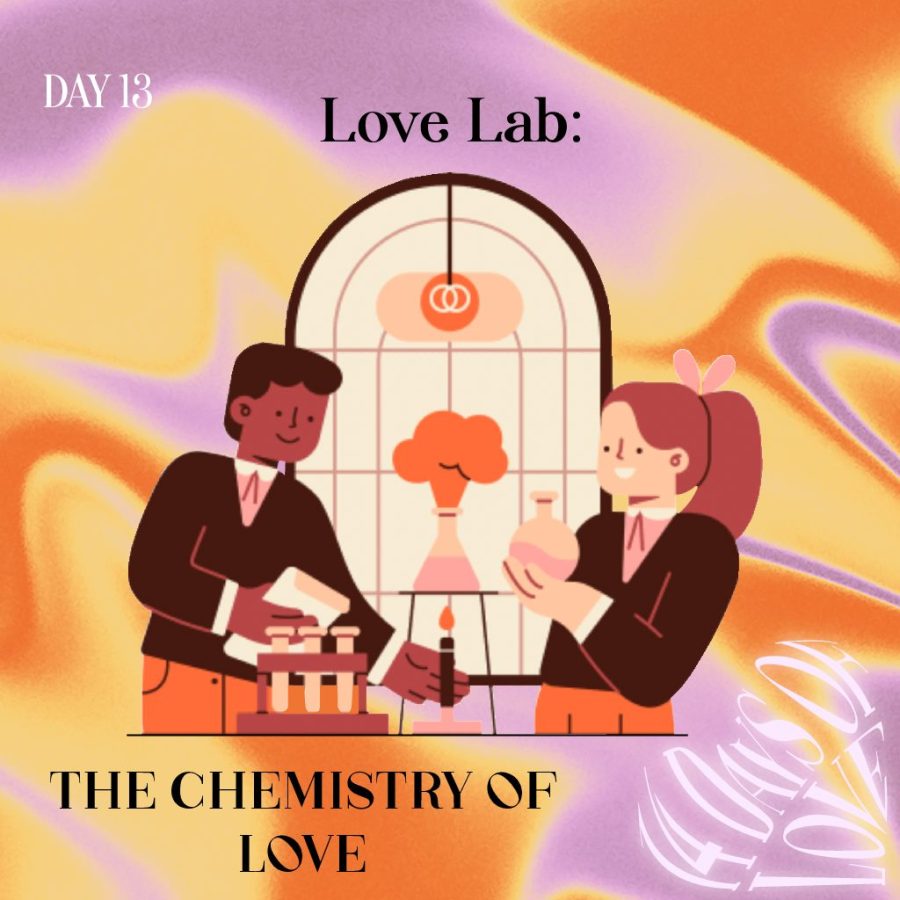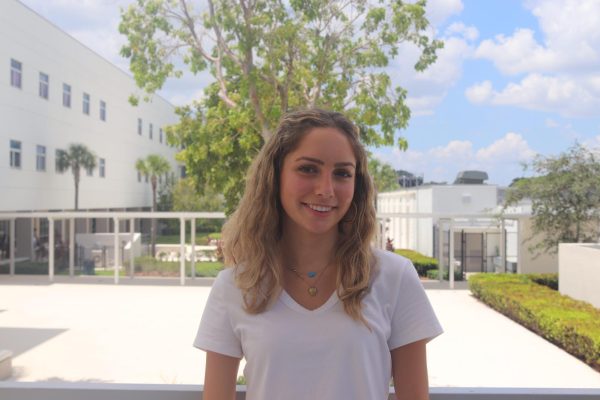14 Days of Love Day 13: Love Lab: The Chemistry of Love
February 13, 2023
Love: an undeniable feeling almost everyone has felt in some sort of way — whether it is over a crush, a platonic relationship, or even just a hobby — that can make us do crazy things. However, behind this giddy, or “life-altering” feeling, there is a formula; a formula to all the senses brought to the body as you feel yourself falling more and more for that special someone.
Imagine you are walking down the hall and see someone you find so attractive that your heart starts racing and you feel those nervous butterflies; that reaction does not come from the heart, but from the brain.
Driven by an assortment of chemicals each designated to a specific category, love comes in a variety of forms that lead one to act without any thought, yet it ironically sprouts from the mind.
Love can be classified into three categories: lust, attraction and attachment. Though there are overlaps, each type is characterized by its own set of hormones: testosterone and estrogen drive lust, dopamine, norepinephrine and serotonin create attraction and oxytocin and vasopressin mediate attachment.
The first part of falling in love is lust. One may simply see this as a physical attraction to another, however, behind it your testosterone or estrogen serves as the driving force. Due to our evolution, these chemicals are set off by our instinctive habits of searching for a significant other to establish a life and family.
Lust acts as the catalyst to the rest of the feelings one may find in the near future, but only if you and your crush have “chemistry.” In most scenarios, especially for teenagers, you will find yourself only reaching the second stage of love, also known as “attraction,” as it is your initial interest in someone. However, the harsh truth is that as a teen, —in most cases— it does not last, as we are chemically disposed to be in short-term relationships.
Teenagers are more infatuated with the idea of love itself rather than the person they are exploring it with, eventually leading to boredom.
“Dopamine [seen in stage two: attraction] is what you guys are prone to, so that is why many teenagers do not last that long with their boyfriend or girlfriend because dopamine is a kind of immediate reward, so teenagers are going to feel like ‘I need a new girlfriend because I am not feeling the same way as I did in the beginning,” Miami Palmetto Senior High AP and Pre-AP Chemistry teacher Dr. Yuria Sharp said.
The stage of attraction appears when your body releases the most dopamine, norepinephrine and serotonin to the brain. The beginning of a relationship may be the most thrilling and “all-consuming,” since attraction is controlled by the same brain pathways that control “reward” behavior.
Dopamine, the chemical that plays a large role in the brain’s reward pathway, is released when we do things that make us feel good, like spending time with our significant other. Similarly, the body releases norepinephrine, which leads to energetic and euphoric sensations due to the chemical’s role in the body’s adrenaline levels. You may find yourself in that stage of attraction where you feel “lovesick” to the point where the body loses appetite and sleep because of the infatuation you may have with your partner and the desire to be alongside them.
Surprisingly, serotonin, the deemed “happy hormone,” actually decreases during this stage, which supports scientists’ beliefs that it is the underlying cause of the strong infatuation seen at love’s emergence.
Attachment, the final element to falling in love, holds the power of commitment sparked through oxytocin and vasopressin. As seen at the beginning of a relationship, dopamine plays a large role in the game of love. Yet, as your relationship grows, the hormones oxytocin and vasopressin replace it. You now have the desire to nurture and form a bond with the other.
So, if you find yourself falling in love, your heart plays a role, but behind it all, the brain is your real-life cupid.










